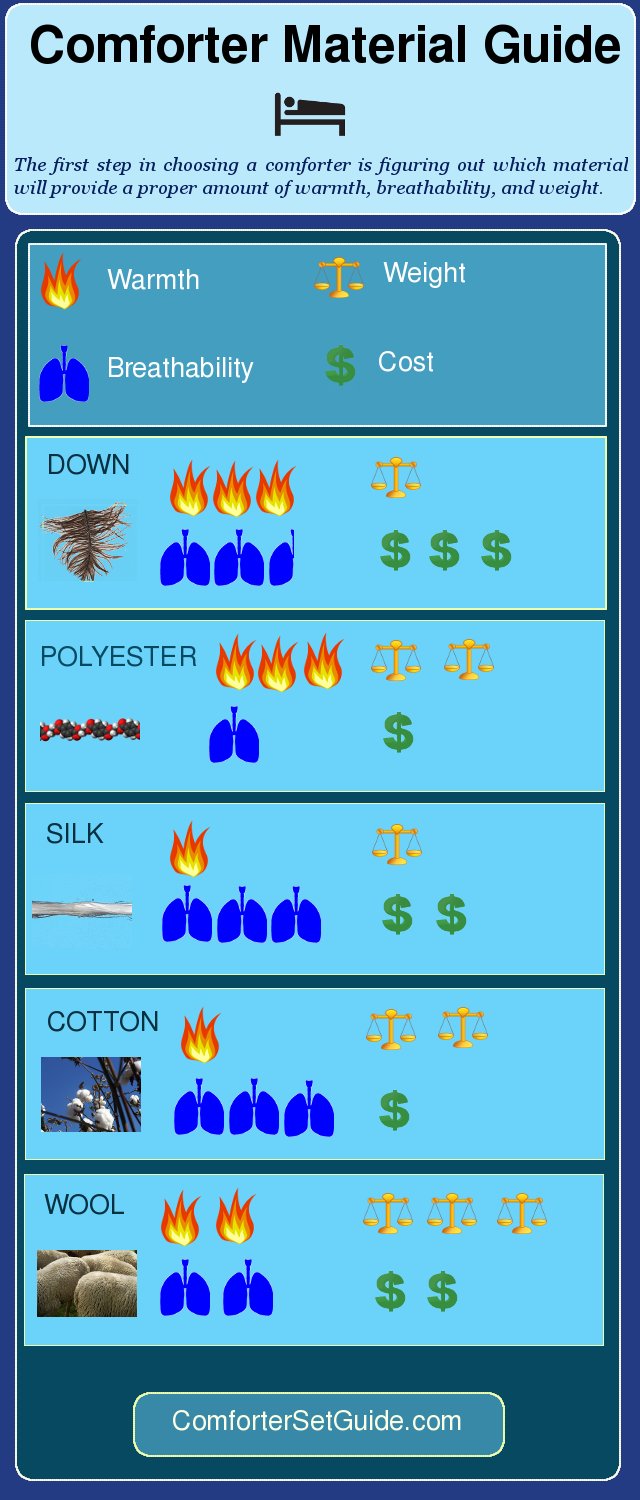Duvet/Comforter Filling Compared?

A duvet or comforter can be filled with a few different materials. These materials all have their pros and cons and choosing the correct type of duvet can lead to a better nights sleep.
Down
Down is the classic duvet filling. Down are tiny feathers which are able to contain heat better than any other material. If you are looking for something soft, fluffy and warm, down is an excellent choice. Down is light weight, but the feathers fluff up to create a larger looking duvet. Down is more costly than other materials. It can also irritate allergy sufferers.
Down Characteristics:
- Warm
- Fluffy
- Soft
- Lightest weight
- Costly
- Potential Allergies
Silk
Silk is great for those who suffer from allergies. It is hypoallergenic, luxurious and can be produced without the use of chemicals. Silk duvets are thin and do not fluff the way down does. This makes silk great for those looking for a light-weight bedding material. Silk is not as warm as down, but is warmer than wool.
Like down, silk duvets can be expensive. The price can be more manageable if you get a silk hybrid, which is part silk and partly made of another material. Lower quality silk can be too fragile for bedding.
Silk Characteristics:
- Hypoallergenic
- Light-weight
- Possibly fragile
- Expensive
Cotton
Cotton is a natural plant material which can be used to fill a duvet. It is easy to maintain and clean, and tends to get softer over time. It is not as good as down or silk at keeping in warmth.
Cotton Characteristics:
- Natural
- Plant-based
- Easy to clean
- Not as warm
Wool
A wool filled duvet is perfect for those who enjoy sleeping under heavy covers. It is a natural material and is renowned for being able to keep warmth while wet. For those who sweat a low while sleeping or live in a humid environment, wool would be a great choice. Wool filling feels more dense than other materials, giving a blanket-like feel. Wool also has the ability to release heat, ensuring that while you stay warm, you do not over heat. This has its limits and a all-season wool comforter will be warmer than one made of cotton.
Wool Characteristics:
- Heavy
- Dense
- Great at wicking moisture
- Blanket feel
- Temperature Regulating
Polyester
Polyester is a man-made material that is sometimes used in duvets. It is highly durable and has a low cost. It is resistant to wear, though oil-based stains are difficult to remove from polyester. It traps heat and moisture and is not as breathable as the other materials on this list. It can be irritable to sensitive skin. If you are looking for a cheap duvet, polyester might be the right choice for you.
- Easy to care for
- Man-made
- Cheap
- Long lasting
- Not breathable
Blends
A final alternative is a blend of different materials. Duvets can be filled with multiple different types of materials. The result is a duvet which has the characteristics of both materials. A cotton-polyester blend for example will have a bit of characteristics of each material.
Down-feather blends are also popular. This combines pure down with larger feathers. This creates a cheaper alternative to pure down filling.
